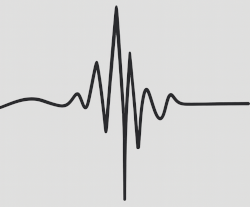551 CE Beirut Earthquake











Multiple authors, including several contemporary writers, described
how the
551 CE Beirut earthquake affected the city of Beirut.
These include
Johannes Malalas,
Agathias of Myrina,
John of Ephesus,
the author of the
The Anonymous Itinerarium (erroneously) attributed to Antoninus of Piacenza,
the anonymous author of
Fragmenta Historica Tusculana,
Pseudo‑Dionysius of Tell-Mahre,
Theophanes,
Michael the Syrian, and
Bar Hebraeus.
Contemporary
Johannes Malalas,
writing from Constantinople, reported “a severe and tremendous
earthquake,” with Berytus (Beirut) among the cities that suffered and
“large numbers of people” trapped in the ruins.
As a young man familiar with Beirut’s prestigious
law schools and living in Alexandria, Egypt when the earthquake struck,
Agathias of Myrina
lamented that Beirut “was completely ruined and its world-famous
architectural treasures were reduced to a heap of rubble.”
Bare pavements were almost all that remained and many inhabitants and law
students were “crushed to death.” Agathias notes that the law school moved
temporarily to Sidon, and later observed that the rebuilt Beirut
was “very different from what it had been in the past.”
Multiple sources state that imperial relief followed. Malalas, John of Ephesus,
Pseudo-Dionysius of Tell-Mahre, and Theophanes each record that funds were sent by
Emperor Justinian
(r. 527–565 CE) to aid restoration.
The Anonymous Itinerarium reports on a visit to Beirut 5–15 years after the earthquake. In the report, the city’s bishop
asserted that 30,000 people were identified who perished in the ruins.
This number did not include temporary residents who the church was unable to identify.
A tsunami also struck the city. While several writers described
a tsunami that struck the Phoenician coastline, John of Ephesus and
Pseudo-Dionysius of Tell-Mahre detailed Beirut’s experience.
Initially the sea ebbed for nearly two miles, exposing the seabed.
Many rushed out and were drowned when the
surge returned. Both authors placed the main shock leveling Beirut after
the ebbing and surge of the tsunami, a sequence that suggests a foreshock preceded the
main shock. The initial ebbing also suggests that the tsunami was
generated by a near field submarine landslide.
According to Pseudo-Dionysius of Tell-Mahre,
corpses floated in the sea for some time after the tsunami and the city burned for nearly two months.
Finally, three days of rain extinguished the flames. Pseudo-Dionysius of Tell-Mahre also records that Beirut’s
aqueduct was destroyed by the earthquake.

